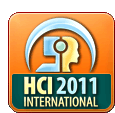T12: Practical Statistical Methods for User Research
Half Day Tutorial
James R. Lewis (short bio)
IBM Software Group, USA
Jeff Sauro (short bio)
Oracle, USA
Objectives:
If you don’t measure it you can’t manage it. Usability analysis and user-research is about more than rules of thumb, good design and intuition: it’s about making better decisions with data. Is Product A faster than Product B? Will more users complete tasks on the new design? Did we meet our goal of a 75% completion rate? What sample size should we plan on for a survey, or for comparing product? Will five users really find 85% of all problems? Learn how to conduct and interpret appropriate statistical tests on small and large sample usability data, then communicate your results in easy to understand terms to stakeholders.
Content and benefits:
- 09:00 Introduction
- 09:15 Did you achieve your testing goal?
- Using t-test and confidence intervals based on t for continuous usability data
- Using binomial tests and binomial confidence intervals for discrete usability data
- 10:05 Is there a statistically significant difference?
- Between- and within-subjects t-tests (continuous data)
- Break (1030-1100)
- Chi-square and Fisher tests (discrete data)
- 11:25 How many participants do you need?
- Sample size estimation for summative usability testing
- Sample size estimation for formative usability testing
- 12:15 Conclusion
Target audience:
Open to anyone who’s interested in quantitative usability tests. Participants should be familiar with the process of conducting usability tests, have an understanding of basic descriptive statistics such as the mean, median and standard deviation, and have access to Microsoft Excel. Participants should be familiar with the process of conducting usability tests, have an understanding of basic descriptive statistics such as the mean, median and standard deviation, and have access to Microsoft Excel. The attendees should plan to bring laptops (Mac or PC) to get the most out of excel based statistics calculator. Without a laptop participants can still participate in the exercises and download the material after the course.
Relevant links:
Brief Biographical sketch(es):



